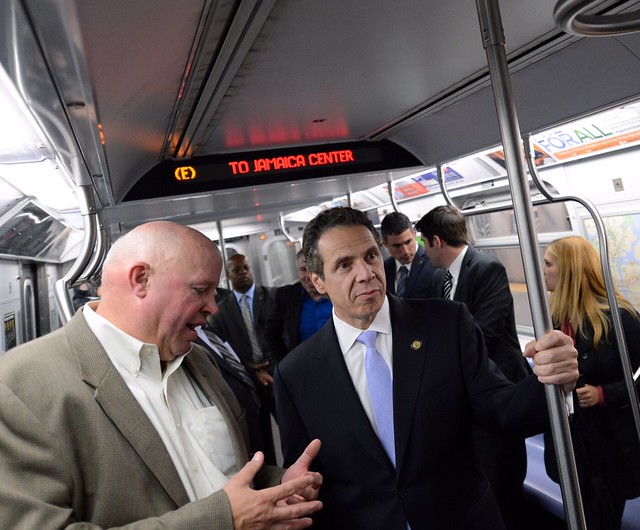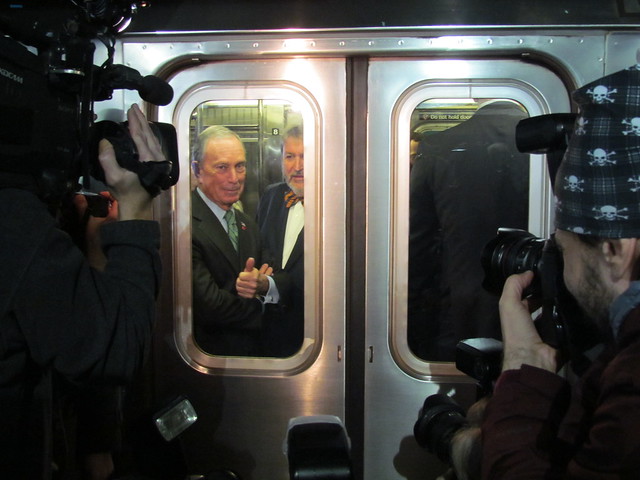Nearly two years after the storm, it’s easy to consign the floodwaters that consumed New York’s underground infrastructure as Sandy rolled in to memory. Thanks to the perfect storm and tidal conditions, nearly every tunnel into and out of Manhattan suffered from saltwater flooding, and as we’ve seen with the MTA, work to repair the damage has been time-consuming and costly. Even as the G and R train tunnels have reopened, eight other subway tunnels will require some degree or remediation and repair work.
We’ve heard over the years that Amtrak’s tunnels suffered similar fates. Already nearing the end of their useful lives, the saltwater corrosion has sped up the process, and now the rail provider is warning that very disruptive repairs are required to maintain and rebuild the tunnels. In a PDF statement, Amtrak announced that a new engineering report has recommended a phased approach to rebuilding the tunnels that involve taking individual tubes “out of service for extended periods.” The agency had more to say:
Superstorm Sandy created a storm surge that resulted in sea water inundating both tubes of the Hudson River tunnel and two of the four tubes of the East River tunnel. The report found no evidence that the tunnel linings themselves are unsound, but it did find that chlorides and sulfates caused, and are continuing to cause, significant damage to key tunnel components such as the bench walls and track systems as well as the signal, electrical and mechanical systems.
The tunnels are safe for passenger train operations. Amtrak has a robust tunnel inspection program, conducts regular maintenance work and will be performing interim work as needed. However, a permanent fix is required soon so that the tunnels remain available for long- term use by the traveling public. Amtrak engineers are working with expert consultants on designs to rehabilitate the two damaged tubes of the East River tunnel and will coordinate with other agencies to minimize impacts to train service and other projects.
Now, the coverage of this announcement has been rightly dire. The Times, The Journal and Capital New York all ran stories about how problematic service could become. To perform even basic remediation work, which could begin in late 2015, Amtrak needs to close one of the East River Tubes, which could cause a reduction in Amtrak, LIRR and NJ Transit service by around 25 percent. If and when Amtrak has to close one of the Hudson River Tubes, service could fall by as much as 75 percent.
The real problem is that the work that must go on — full saltwater remediation — can’t and won’t happen, Amtrak says, until another Hudson River crossing is built. In a way, this engineering report gives Amtrak another platform upon which to base their argument for the Gateway Tunnel, but as Amtrak officials have noted, it’s likely to be another decade before Gateway is open. That timeline is of course contingent upon funding, and right now, the money isn’t there. One way or another, Amtrak anticipates only approximately 20 years of life left in their Hudson River tunnels.
This news has raised the spectre of the ARC Tunnel, and in a twist of the knife, to The Journal, a spokesman for Chris Christie stated that the New Jersey Governor “has always recognized the need for additional trans-Hudson transit capacity.” For now, Amtrak is moving forward on design and planning while awaiting the money. “Amtrak,” the agency promised, “will ensure the safety of all passengers and balance efforts to minimize service impacts while also advancing as soon as possible the permanent fix needed for the long-term reliability of the tunnels for train service to Penn Station, New York.”

















 As the MTA gears up for a full-court press in Albany and City Hall concerning
As the MTA gears up for a full-court press in Albany and City Hall concerning  Update (4:00 p.m.): The full proposal for the MTA’s 2015-2019 Capital Plan has been
Update (4:00 p.m.): The full proposal for the MTA’s 2015-2019 Capital Plan has been 


 (42 St Shuttle)
(42 St Shuttle)